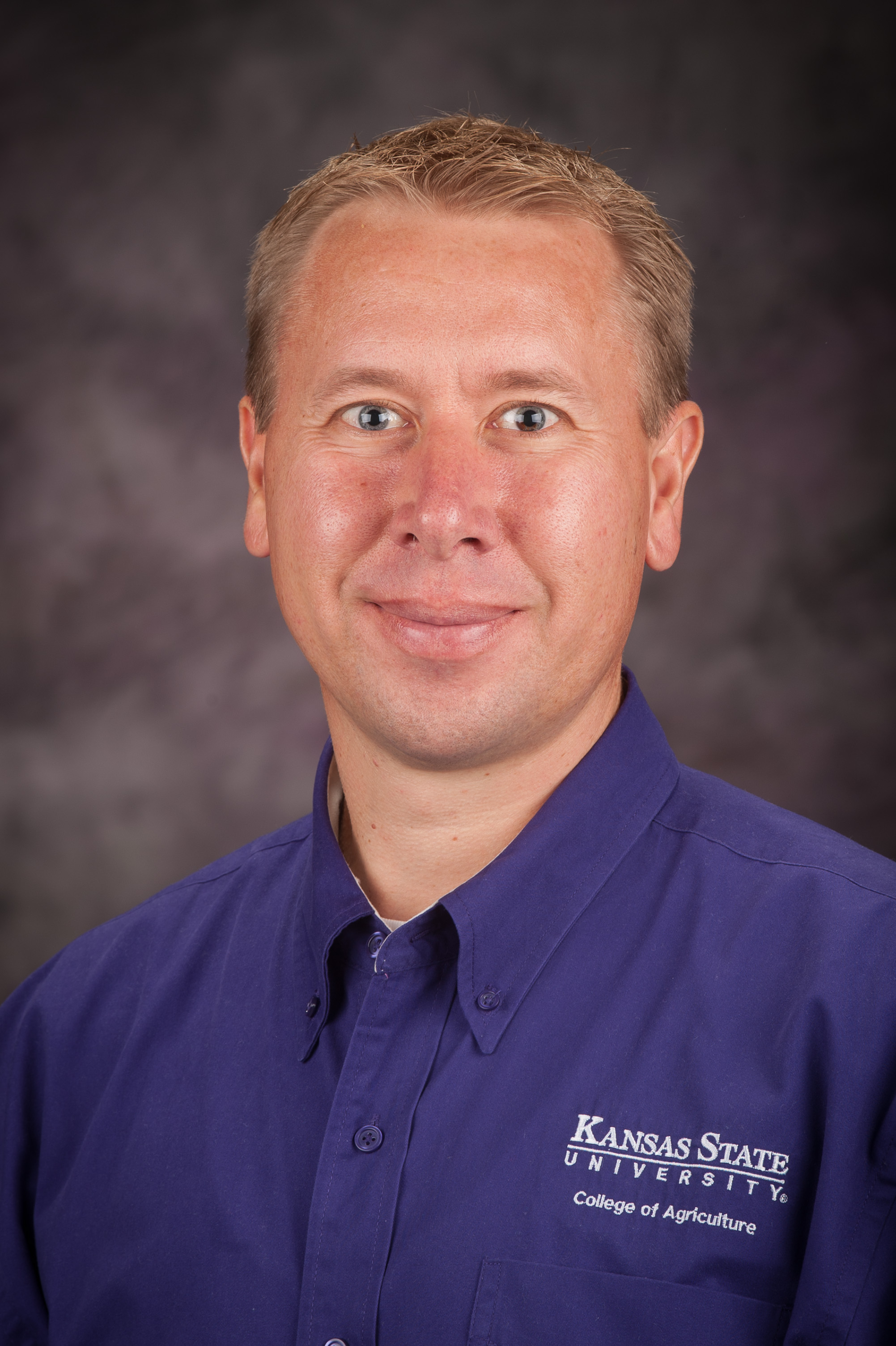My teaching style is to emphasize the fundemental scientific principals and then apply them to real life situations. I enjoy active learning techniques that encourage students to discuss class principals and work together to find solutions. I am always looking for ways to extend course material beyond the classroom. In connection with my teaching activities, I am also involved with the Willie and the Beanstalk Contest.

Nathan Nelson, PhD
Professor
Soil Fertility & Nutrient Management
2708 Throckmorton PSC
1712 Claflin St
Manhattan, KS 66506
Ph: 785-532-5115
Dr. Nathan Nelson’s interest in soil fertility and nutrient management extends to both agricultural production and environmental quality. Those two areas of concern can easily co-exist, he firmly believes. A strong emphasis on the environment comes naturally for him.
Dr. Nelson is an outdoorsman at heart. In his spare time, he enjoys gardening, camping, woodworking, and other outdoor activities. In his work as Associate Professor of Agronomy at K-State, he focuses primarily on finding ways to increase the efficiency of phosphorus applications in agriculture. One of the main goals is to reduce phosphorus runoff into surface waters. Another is to make sure agricultural producers get good value for the money spent on fertilizer nutrients.
“We know that many of the surface waters in Kansas are impaired by phosphorus. And we know what practices can be used to reduce phosphorus runoff from land surfaces,” he said. “What we need to do now is to get as many of these practices as possible actually implemented in the field, then see how well those improved practices correlate with measured changes in phosphorus levels in the water.”
His research also focuses on measuring the environmental impacts of other nutrients, such as nitrogen, at the watershed scale. While a large portion of his position deals with research, Dr. Nelson also has an opportunity to work directly with students. His extensive field research in many different areas of the state gives a strong practical angle to his teaching.
“It is important for students to understand the impact of nutrient applications on agronomic, economic, and environmental factors,” Dr. Nelson said. “The information they learn can be applied in the field to benefit agriculture and the environment, which will eventually benefit society as a whole.”
Dr. Nelson is a native of Manhattan, so being a member of the Agronomy faculty at K-State is like being at home. He has also lived in North Carolina and Idaho during his years as a graduate student and first professional position, with the USDA–ARS Northwest Irrigation and Soils Research Lab. He joined the faculty at K-State in 2005.
He and his family enjoy Manhattan. “We feel it is a great place for us to raise our children and we love the K-State pride felt in this town,” he said. Their family is involved in the community in many ways, and enjoys helping others whenever they can.
Research
My research program responds to needs and interests of Kansas agricultural and environmental communities through the study of chemical, biological, and management factors affecting nutrient availability and loss in agroecosystems. Research focuses on nutrient management, cycling, and distribution within soil profiles and across landscapes. My interests include the investigation of nutrient availability in agricultural and industrial by-products and their impacts on agricultural sustainability and nutrient loss. I enjoy research studies at multiple scales, such as lab-, small plot-, field-, and watershed-scale projects. I am also interested in incorporating new technologies, such as computer simulation models, GIS and GPS, or precision agriculture into research projects.
My vision is to develop productive, sustainable agricultural production systems with minimal nutrient loss co-existing with safe, clean water sources void of nutrient impairment.
The mission of my research team is to improve our fundamental understanding of principals governing nutrient availability, transport, and uptake and to develop capacity within students to improve nutrient recycling, protect water quality, and increase food production in agroecosystems through use of these principals.
I direct the research at the Kansas Agricultural Watershed Field Laboratory (ksu.edu/kaw), where we investigate water quality improvements through implementation of conservation practices in agricultural systems.